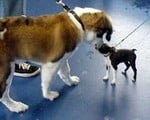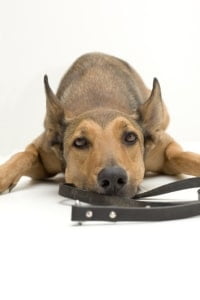How obedient is your dog? Is your dog one when, if you command “Go fetch the paper, boy!!”, it does just that – it fetches the paperboy? If so, then your dog needs help. Well, now that the kids are back to school, why not consider sending your dog to school as well? Obedience training is how it’s done and, without exception, it’s important for all dogs.
The Value of Training

Obedience training also socialises dogs with the two environments into which they need to blend harmoniously. The first environment is the world of humans and the second is that of other dogs.
Of course, training makes your dog more responsive to commands and makes your hound much easier to control in the home scene. Mind you, your trainer won’t train your dog. His or her job is to train you and one of the most important jobs for your trainer is to teach you to ‘talk dog’.
What Age Should Training Be Started?
Training can be started at any age. Contrary to common opinion, you can teach an old dog new tricks but certainly, the training is easier and quicker if it is started at a young age. Just like kids, the ideal first step is a preschool.
Puppy classes are usually conducted when pups are about between eight to sixteen weeks of age but it’s much better to start as early as possible. Leaving your puppy’s training until 16 weeks of age can make achievements more difficult.
From there you can spring into more formal obedience training as the pup matures. Pups are very amenable to training but it must be done gently and with minimal, or no, punishment.

In Queensland, your dog, whether it be a purebred or crossbred, can graduate as a Community Companion Dog (CCD) as its first level of official recognition and onwards through many other levels reaching the lofty heights of a Utility Dog Excellent (UDX).
Obedience training is conducted in all areas. There are many obedience training clubs in the suburbs operating under the sanction of the Canine Control Council who also have an Associate Dog Register to facilitate the registration of crossbreds dogs to allow them to enter competitions.

Also, there are many professional training companies that train dogs as a business, and they do it well. These companies offer a full range of services including group training, private lessons, home-based training, and behaviour correction, right through to attack training for those few who genuinely need this type of service.
You can branch off from normal obedience training to challenging but absorbing sports such as agility training, jumper classes, fly ball events and even lure coursing. These sports are the bee’s knees for active dogs in small back yards!!
Checking on collars and leads
All you need to start training is a sense of humour, lots of patience and a lead and collar. The right type of lead and collar is essential and you should seek the advice of your trainer. Here we have a dash of controversy. Many trainers are heading away from the check chains in favour of flat leather or fabric collars and to head collars such as Halti’s, Gentle Leaders and similar devices. Head collars fit around a dog’s nose and neck in much the same way that a halter is fitted to a horse. The logic is that where the head goes, the dog must follow and that trying to bend a dog in the middle of its neck with a normal collar is more work than it needs to be.
If you are using a harness – be sure to choose the correct style. Some harnesses promote the ability of a dog to pull while others reduce that problem. More details here.

Dogs which are constantly fearful or constantly aggressive in a group lesson are learning the very behaviours obedience training is supposed to stop. If your dog fits this category, remove if from a group situation and seek individual therapy from someone who knows what they are doing.
By the way – did you hear about the plumber who called his dog “Pipe” – it was very good at the ‘down’ command!
